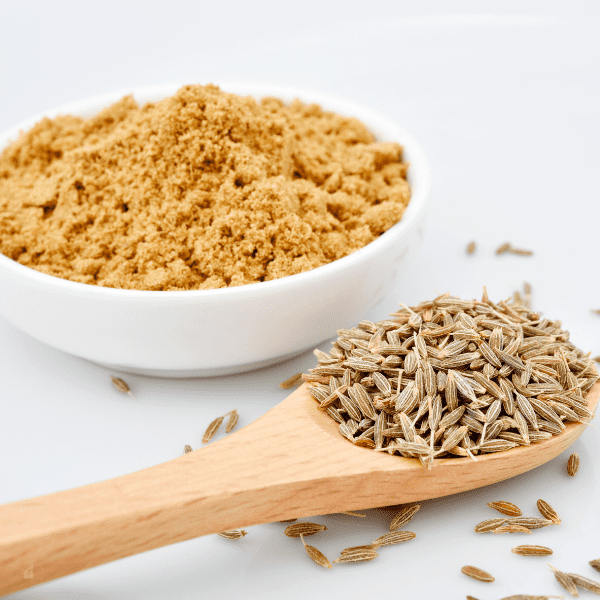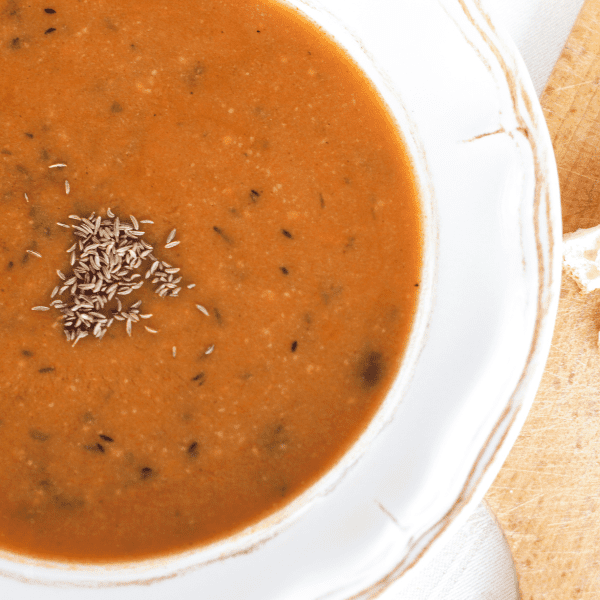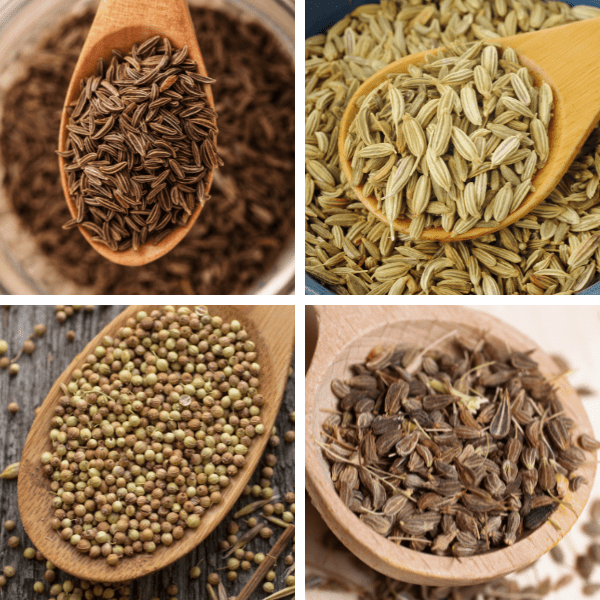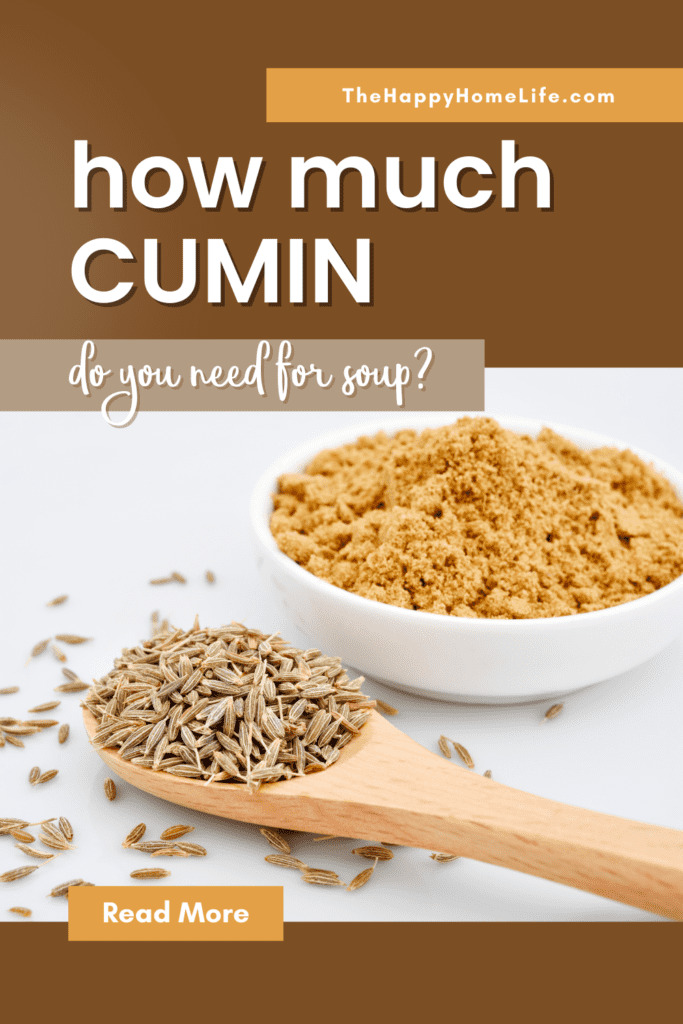Soup season is here, and cumin is one of the most important ingredients for making a delicious soup! But how much cumin in soup? You will learn everything you need to know about cumin and its uses in soup. We’ll also discuss how much cumin should be used in order to get the most flavorful soup possible.
Welcome to the world of cumin!
[fluentform id=”2″]
Cumin is a powerful spice that has been used in Middle Eastern cuisine for centuries. It adds a unique flavor that is both earthy and flavorful.
The great thing about cumin is that it can be used in many different ways, from adding it to soup to using it as a rub for meats. I will show you how much cumin you need for soup, what it does for soups, tips for using it properly, and even some delicious recipes featuring cumin.
So let’s get started on your journey into the wonderful world of cumin!

What is Cumin?
Cumin is a popular spice used in many cuisines around the world, including Latin American, Middle Eastern, African, and Indian. It is both used as a whole seed and ground into powder form. Cumin adds a unique flavor to dishes such as soups and stews, adding pungency to rubs and marinades for tofu.
Despite its popularity, it is important to be careful when using cumin as it can quickly overpower other flavors if too much is used. Understanding its properties and uses is essential to make the most of cumin in your soup and other recipes.
How Much Cumin Do I Need For Soup?
When it comes to adding cumin to soup, it’s important to find the right balance. Too little and the flavor won’t be pronounced enough, while too much can overpower the other ingredients. Generally speaking, most soups require between 1/2 and 1 teaspoon of cumin per 1 quart of liquid. If you’re using ground cumin, you may need up to 2 teaspoons per quart.
If you’re using whole cumin seeds, start with just a few and add more to taste as they release their flavor as they cook. To ensure an even distribution of flavor, it’s best to add the cumin near the beginning of cooking or even toast it in a dry pan before adding it to your soup.
Use the tips from our next section about what cumin does do for soups to help you get the perfect balance for your soup.

What Does Cumin Do for Soups?
Cumin is a popular spice used in many different types of cuisine, including soups. It has a distinct flavor that can add an earthy, nutty, and slightly smoky taste to soups. It can also be used to enhance the sweetness of root vegetables like carrots and beets.
Cumin is also known to add complexity to vegetarian dishes. When using cumin in soups, it’s best to start with a 1/4 teaspoon per cup of soup. This will give the soup a nice flavor without being too overwhelming.
Toasting the cumin seeds before adding them to the soup can help bring out even more flavor.
Using cumin in soups can help bring out unique flavors and adds complexity, making it a great addition to any soup recipe.
Tips for Using Cumin in Soup
In addition to knowing how much cumin to use in soup, it’s important to understand the best ways to use it.
Cumin should always be added early in the cooking process, as this allows the flavors to develop. Adding it at the beginning of a recipe also allows for better control over flavor intensity.
If you are using ground cumin, try toasting it first in a dry pan for a few minutes to really bring out the flavor. It’s also helpful to add a pinch of salt when using cumin in order to help bring out its flavor.
Finally, if your soup has any acidic ingredients like tomatoes or citrus, adding cumin last will help minimize its acidity.
By following these tips and understanding how much cumin to use in soup, you can create delicious and flavorful dishes that everyone will enjoy.
Benefits of Cumin
Cumin is an incredibly versatile spice with a wide range of health benefits. It is loaded with antioxidants, iron, calcium, magnesium, and other essential vitamins and minerals. Cumin can help improve digestion, boost memory, and prevent cancer cells from multiplying.
It can also increase the iron potency of your diet, making it a great option for vegetarians looking to get more iron in their diet.
Furthermore, its pungent flavor is perfect for enhancing the taste of soups, stews, and rubs, and marinades for tofu. With its many nutritional benefits, it’s no wonder why cumin has become such a popular ingredient in so many dishes.
How to Store Cumin
Storing cumin properly is key to ensuring that it retains its flavor and aroma. Whole cumin seed typically has a shelf life of one year, especially when you store it in a dark pantry. Ground cumin, on the other hand, will last up to three months when stored in an airtight container in a dark cabinet.
Keeping your cumin in the right environment will ensure that it always delivers the flavor you are looking for and that you can use all of the cumin you buy without having to discard any.

Substitutions for Cumin
If you have run out of cumin or don’t like the flavor, a few substitutes can be used in your soup recipes. Caraway seeds are a great substitute as they have a similar taste and texture. Fennel seeds, coriander seeds, anise seeds, turmeric powder, or chili powder can all be used to flavor your soup similarly.
Each has a slightly different taste profile than cumin, so you may want to experiment to find the right one for your dish. Additionally, you can use store-bought season blends that contain cumin, such as chili powder or curry powder. Use about half of what your recipe calls for in cumin with any of these substitutes to ensure the flavor is not overpowering.
Recipe: 5 Soup Recipes With Cumin
The use of cumin in soup is a great way to add flavor and depth to your dish. In this section, I will provide five recipes for delicious soups that make use of cumin as an ingredient.
1. Cumin Get It Chicken Soup: A flavorful and hearty soup made with chicken, vegetables, and spices such as cumin and chili powder. It’s a comforting and healthy dish perfect for a cold day or when you’re under the weather.
2. Lentil Soup with Coriander and Cumin: A healthy and flavorful soup made with lentils, vegetables, and spices such as coriander and cumin. It’s a hearty dish that’s perfect for a cold day or when you’re looking for a nutritious meal.
3. Carrot and Cumin Soup: A traditional Middle Eastern soup made with carrots, cumin, and other spices, this comforting soup will surely become a family favorite.
4. Slow-Cooker Chicken Tortilla Soup: This flavorful soup is made with chicken, tomatoes, peppers, onions, and plenty of cumin for added flavor. It’s perfect for busy weeknights!
5. Cumin Spiced Potato and Leek Soup: This creamy and fragrant soup comes together in just 30 minutes and is made with potatoes, leeks, and cumin for a depth of flavor. Serve it up as an appetizer or a light meal!

In conclusion, cumin is an incredibly versatile spice that can be used to add flavor and depth to many dishes, including soups. It has a warm, earthy taste and a slightly bitter flavor that pairs well with many ingredients.
Plus, research has shown that cumin can have positive health benefits, including improved blood sugar control, weight loss, and reduced cholesterol levels.
When using cumin in soup recipes, it’s important to remember to add it early on, so it has time to release its essence. It’s also best to store cumin in an airtight container in a cool, dark place for maximum freshness.
If you don’t have any cumin on hand, substitute equal parts caraway or coriander seeds for a similar flavor and aroma. With all of its wonderful uses, it’s no wonder why cumin is one of the most popular spices in the world!






